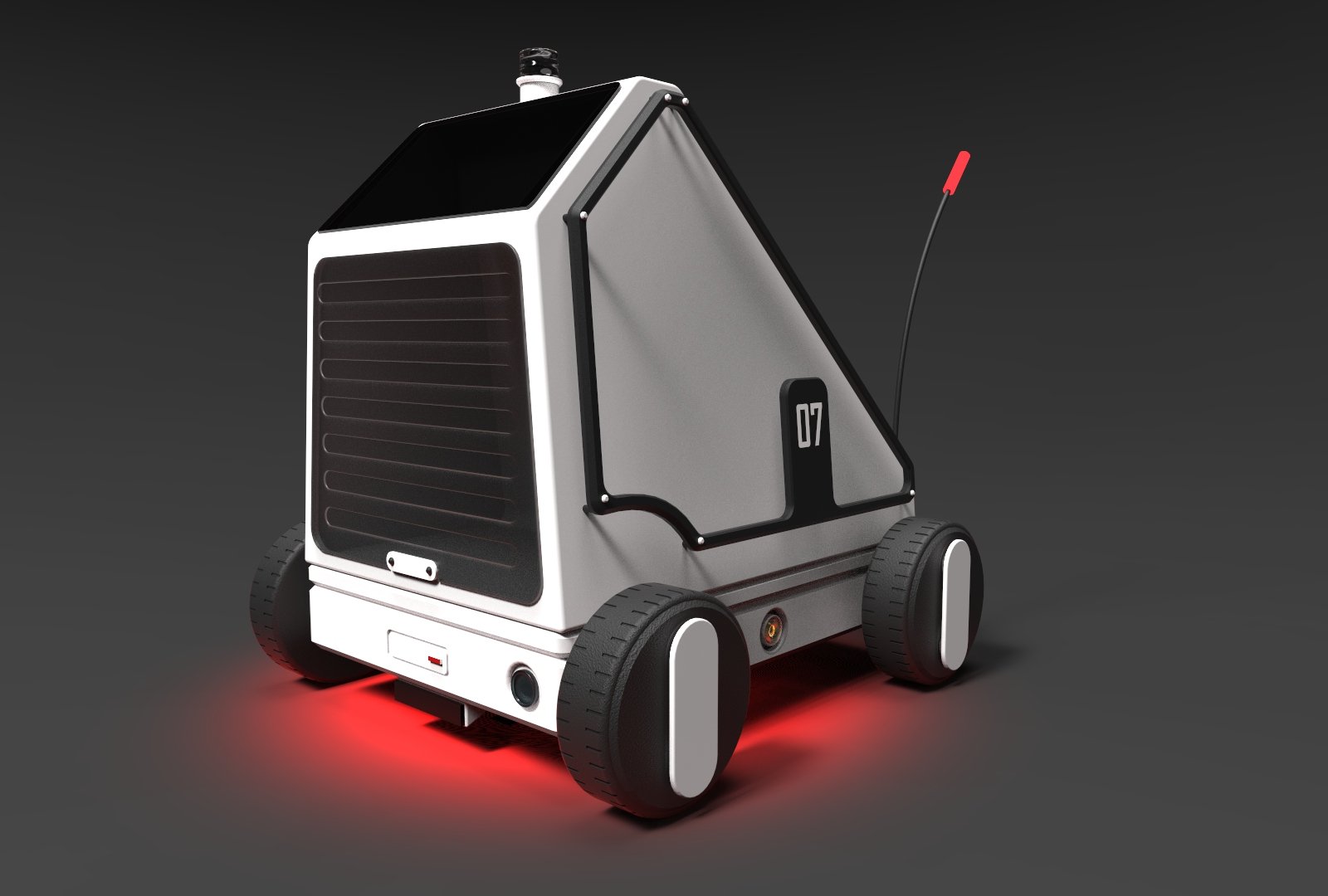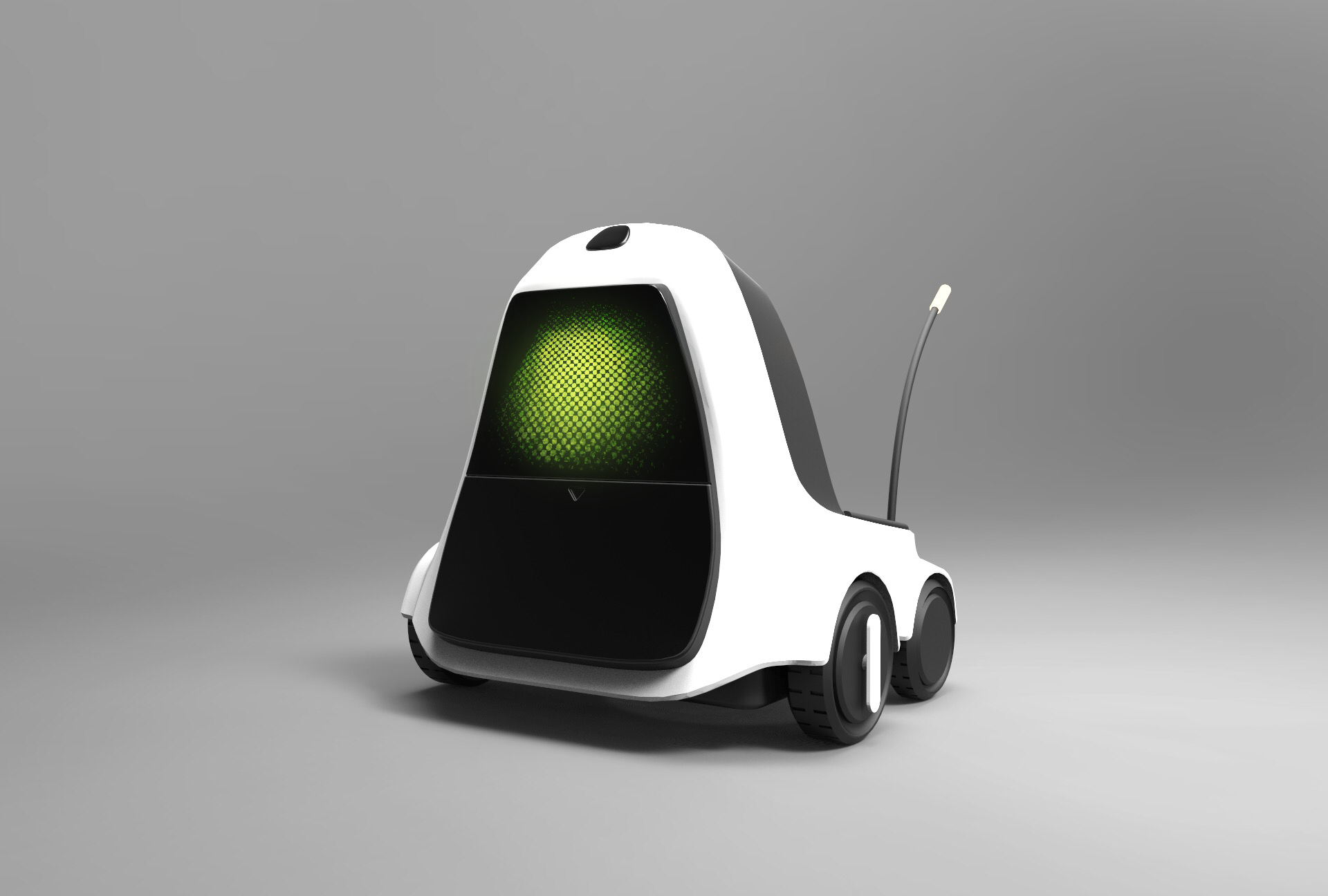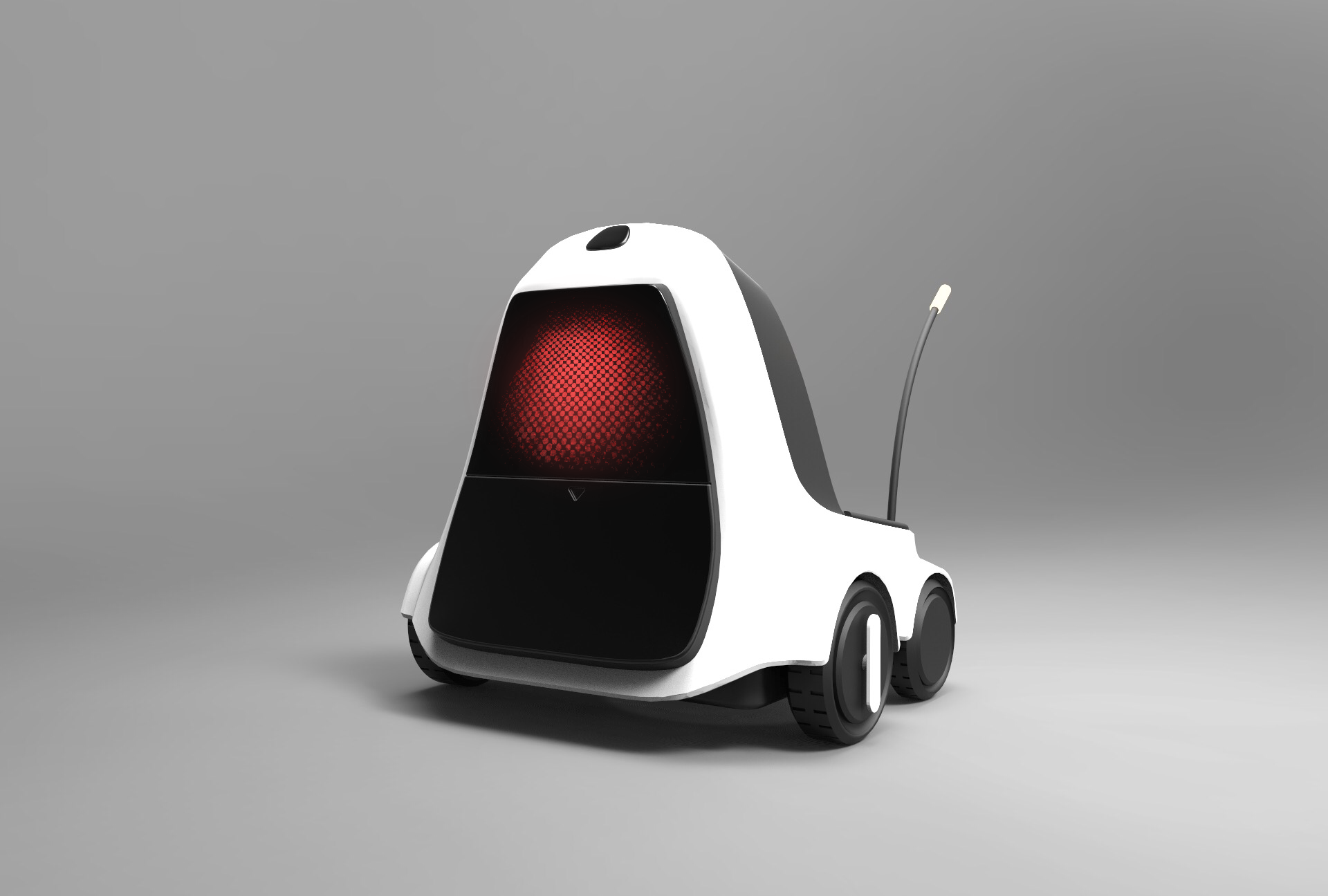
Alvin
August 2021 - November 2021
Under the Mobility and Services studio in my final year - “Alvin”, is an autonomous delivery vehicle capable of transporting people across large storage spaces and deliver goods to people while running through public spaces.
Alvin
Alvin
The project was driven by investigating the relationship between autonomous vehicles and humans while exploring how these vehicles communicate. The outcomes also focussed on making these vehicles more approachable within society, especially when the absence of a human behind the wheel can be daunting to some.
01. Introduction
The three “WHYs?”
Experiences
Customization and flexibility of one’s journey in consideration with comfort, privacy and adaptability
Community
Mobility as a product - for the people by the people. Incentivised connection between users to serve mutual needs of commute.
Logistics
Conventional way of moving goods around; crowdsourced logistics. Shared direction + Delivery
Experiences
Logistics
Community
‘Imagining future roles within Mobility’
02. Mobility + Emotional Design
The first step to generating motivation to use new mobility technologies is the establishment of trust.
• Autonomous vehicle (AV) → Absence of Human → Service Robot designed to appeal to human emotion.
• People are open-minded towards AV technology, though trust remains a significant obstacle. Concerns centre around the reliability of driverless systems, safety, data privacy and software misuse.
• The elicitation of positive emotions in users is hypothesised to reduce uncertainty and unfamiliarity, and lead to greater trust in the machine.
• A desirable, coherent user experience is created by aligning a product or service’s visual appearance, interaction and features with a deep understanding of user needs and wants and by targeting emotion to influence people’s decision-making.
Wide bodywork, muscular proportions and aggressive look assumed daunting in absence of a human behind the wheel.
• Adapting soft edges, rounded proportions and light signatures for a more welcoming experience and AI feedback.
• Absence of Human and introduction AI poses a design challenge which requires a high degree of communication with its immediate environment.
• “without a human driver, it’s an ideal opportunity – and also a necessity – to be able to exchange information with its environment. In doing so, the toy-like language of forms should act on its environment in as friendly and welcoming a manner as possible.”
• Use of light signals and digital displays to communicate and tackle unfamiliarity of self-driving vehicles.
03. Direction and Mapping
04. Concepts
Concept 01
The concept is based on replacing shopping carts with a smart autonomous drop delivery vehicle parked right outside store; operated via a digital display. The user input is required to place the purchased products/groceries on to the vehicle and indicating the parking spot before pressing send. Following the interface the vehicle is aimed to be capable of taking the goods to the your cars drop location in the parking through a set channel where these vehicles manage their own speed, feedback and impacts with established interconnectivity between all the pods on the set route.
Concept 02
Autonomous carrier was developed to act as a means of transport for short trips around big storage space/ warehouses to help transport unloaded boxes to a desired spot. It allows room for attachment from the rear end where good can be place. It further serves internal storage at the front which can facilitate food delivery as an individual vehicle without any attachments. Although the concept is proposed and aims to be AI operated; it provides manual control if needed. The computer operated system uses GPS to reach the desired location while communicates with the environment using sensors and cameras.
Concept 03
Private pod was designed to explore exterior and interior aesthetics in relation to ride comfort and travel. Questions asked which led to the development of this concept focused on approachability in AV aesthetics and purpose of the ride. With autonomous development the purpose of the ride shifted from not only getting from point A to point B but also was about the overall experience of the journey and feel of the car from inside to outside.
Concept 03 aims to be a self driving private vehicle which focuses on personal preferences, experience needs and interior adaptation in absence of manual driving.
05. Early Concept Dev.
After some Bodystorming, the scale of the vehicle was further developed in via CAD, in relation to offer a secure experience and ease of riding the vehicle.
Moving away from the Segway approach, the scale of the final design was increased to match the height floor up to the waist of the avg. height in Australia (5”10). This was done as to implement a sense of security when the user steps up on the AV, the sides creates an enclosed environment for the rider in public spaces.



06. Storyboard
07. Refinement
Refinement Sketch 01
The first refinement after exploration sketches was done on the previous CAD model underlay, while keeping in mind to make the form softer, friendly and approachable. Further, the overall design was adapted to a user touchpoint i.e package pick up and placement from the vehicle. While the interface adds an emotional touch with a digital face greeting pedestrians and the interacting users.
Refinement Sketch 02
After reaching a form which is friendly further development was done based on capturing a silhouette of a tiny robot which runs through the form of the vehicle. This allowed me to attach AI consciousness to vehicle’s form and overall body. Further, drawing back from previous research the toy like features and proportion in the vehicle was emphasised. All leading to an AI powered vehicle which can exist in our public spaces and calls for interaction. The design at this point also aims eliminate elements such as hard edges and strong break lines.
08. Final Concept
Alvin
The Final renders of the new model were done based on the previous colour and finish. Offering a general universal vehicle which acts as a canvas for different brands or services for further adaptation with labelling and colours.



09. Charging Docks
Autonomous Wireless Charging Docks
The AV could charged at designated wireless charging docks with a series of charging pads installed under the street pavement. Each vehicle holds a matching power receiving pad which works when a magnetic field induces an electric current to the vehicle pad further adding charge to the vehicle battery.
10. Commercial
The clear body can adapt to distinct colours to represent different brands, their colours and logos leaving enough room on the body for promotion stickers and marketing content.


































